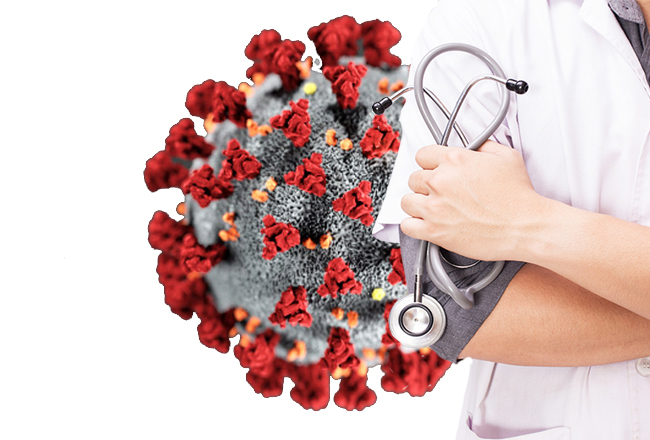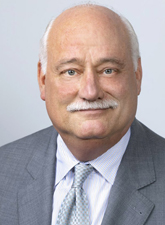White Plains Hospital and other hard-hit centers coping with COVID-19
A report from the American Hospital Association paints a stark picture of the impact the COVID-19 pandemic has had on the U.S. health care system, especially the hospitals where the frontline battle against the disease has been fought.
From March 1 to June 30, the AHA estimates a total financial impact of $202.6 billion in losses for America”™s hospitals and health systems.

The report recounts that confirmed cases of the coronavirus in the U.S. reached 1,000 by March 11. By March 27, the total had grown to 100,000 and by April 28 the number topped 1 million. The effect of the virus on daily life was swift and catastrophic, not only for those afflicted with the disease and their families, but for society as a whole with the imposition of strict social distancing practices, stay-at-home orders and business shutdowns.
Hospitals sustained revenue losses as elective surgeries and standard procedures were eliminated. The association estimated that as a result of canceled hospital services, U.S. nonfederal hospitals stand to lose approximately $161.4 billion in revenue over the four months from March to June.
Losses in revenue were coupled with sharp increases in the number of incoming patients and costs for hospitals since the beginning of the pandemic. The Centers for Disease Control and Prevention estimated the cumulative hospitalization rate to be 29.2 per 100,000 people.
The hospitalization rate for Medicare-aged individuals was estimated at 95.5 people per 100,000 with adults aged 50-64 having a hospitalization rate of 47.2 people per 100,000 population.
The Kaiser Family Foundation estimated that the cost of treating a COVID-19 patient could begin at more than $20,000 and soar to more than $88,000 for those who require a ventilator. A study by FAIR Health estimated the average cost of treating patients with commercial insurance coverage to be $38,221.
On May 11, Rep. Nita Lowey whose 17th Congressional District includes Rockland and part of Westchester, announced that eight hospitals in the district would receive $265.7 million in federal funding for expenses associated with treating COVID-19 patients. This is on top of $5.26 billion that had previously been announced in federal funding for 90 New York hospitals.
White Plains Hospital will receive $65,283,067 from the new round of funding.
Susan Fox, president and CEO of the hospital, said, “As a hospital in the epicenter of the COVID outbreak, we have been in this fight from the beginning, caring for more than 1,200 inpatients and countless other patients in the emergency department with the virus.”
The effect of the virus on hospitals”™ bottom lines, however, pales in comparison with the effect on people, including patients and hospital staff members trying to save their lives.

“I don”™t think I”™ve encountered a physician, an administrator, a nurse who doesn”™t agree they never expected to see anything like this in their career,” Dr. Michael Palumbo, executive vice president and chief medical officer of White Plains Hospital told the Business Journal.
“It is of monumental significance. We at the hospital always have emergency management plans in place. We maintain them. We do mock drills on them but they couldn”™t possibly have adequately prepared us for what we were very quickly faced with.”
Palumbo said the planning provided the necessary structure for activating the response to the crisis that was unfolding. He explained that proper disaster response hinges on organizational structure so that an institution is able to assign tasks, know that things are being worked on and maintain centralized command.
“One of the first things we did when this started was set up a hotline for the community,” Palumbo said. He said the hotline was extensively promoted through social media, the city of White Plains and among community groups. People could call 24 hours a day and get up-to-the-minute information about the outbreak and if they were concerned that they might have contracted it press a number on the phone and be transferred to a health care provider.
“I may not have realized it at the time, but that may have been the best thing that we did,” Palumbo said, suggesting that having a source for reliable information helped prevent people having a sense of panic or chaos. “Patients needing emergency care would be steered to the emergency room and we would be prepared to receive them in a safe manner and those that didn”™t could be steered to their primary care providers or the appropriate support source depending on what it was.”
A flow of reliable information also was important for the hospital”™s staff and Palumbo said that regular emails were sent to doctors, nurses, and the board of directors with timely and accurate information regarding what was happening.
“We are licensed for 292 beds. Pre-COVID, in terms of the staff that we need to have here, we generally ran about 250 staffed beds,” Palumbo said. “There were times, whether it was flu season or something else was going on, where our census ran higher.”
Palumbo said that when the state ordered all hospitals to increase their bed capacity by 50%, White Plains Hospital moved to bring its staff bed total to 375 and was prepared to go higher. He also said that Gov. Andrew M. Cuomo held a conference call with the CEOs of hospitals in the state in which he outlined a plan for all hospitals, private and public, to work together as a statewide system during the crisis. White Plains Hospital participated in the conference and as the pandemic intensified received calls from other hospitals saying that the Department of Health had directed them to transfer patients to White Plains.
“This was truly uncharted territory and something that seemed foreign to us but we understood the necessity,” Palumbo said. “It gave me great optimism that were this to really have gotten as bad as some of the models predicted, and there would have been many hospitals that would have been overwhelmed, that we were really there to support one another.”
The plan is for the cooperation to continue while the number of cases continues to decline and be on stand-by should there be a new wave of the virus.
Palumbo explained that White Plains Hospital is fortunate to be in an area that is not as densely populated as sections of the Bronx and Brooklyn where hospitals were overburdened with virus cases.
“If you look at the breakdown of number of cases per capita and the mortality rate broken down by borough you see that the Bronx and Brooklyn are particularly challenged and we think that”™s because many of the people in that demographic don”™t have good access to routine preventive health care. Consequently, they may be more chronically ill when they contract the virus and be more at risk for hospitalization and even death,” Palumbo said. “While we were significantly busier than we ever dreamed of and came within 20% of needing all 375 beds, we never had more patients than we were able to take care of.”
Palumbo said that like other hospitals White Plains Hospital had to deal with intense competition in the marketplace for personal protective equipment (PPE).
“Things were in short supply. We were anticipating great need and everyone was ultimately competing with one another to get access to what supplies were there,” Palumbo said. “As a hospital we did fairly well and I”™m most proud of the fact that I can say that none of our staff were forced to take care of patients with inadequate PPE. We really believe we had zero to very few employees acquire infection on the job. We really believe that the PPE was effective and for my role as medical director I see that as one of my chief responsibilities, keeping my staff safe.”
Palumbo said that the hospital was able to fill all patients”™ needs for respiratory support by adding anesthesia machines, BiPAP machines and high flow nasal oxygen to its supply of ventilators.
“I”™ve been practicing medicine for 30 years at this point, and I trained through the AIDS epidemic and I saw young people dying from a disease that we didn”™t understand very well at the time, but it was not on the scale of this,” Palumbo said. “The lack of having adequate knowledge to understand the disease, understand the best way to treat people, is among the most frustrating things that a physician or nurse can be faced with because we are trained as scientists and we are trained to ask for evidence and understand the risks and benefits.”